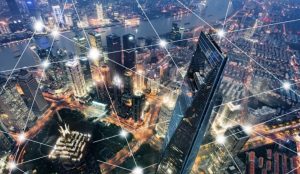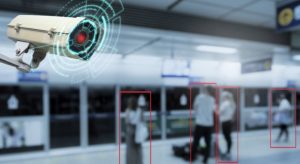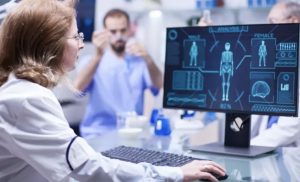In the relentless pursuit of sustainable urban development, the fusion of Artificial Intelligence (AI) and the Internet of Things (IoT) has paved the way for the revolutionary concept of Smart Cities. As the global population continues to urbanize rapidly, city planners are turning to advanced technologies to create interconnected urban ecosystems that optimize resource management, enhance citizen experience, and shape future cities.
Intelligent Transportation Systems (ITS)
In Smart Cities, AI-driven traffic management systems harness data from various sources, including GPS, vehicle sensors, and traffic cameras. The system can optimize traffic flow, reduce congestion, and improve overall road safety by analyzing this data in real-time. Adaptive traffic signal control, for instance, dynamically adjusts signal timings based on traffic density, thus minimizing delays and fuel consumption. Additionally, intelligent parking solutions utilize IoT sensors to guide drivers to available parking spaces, reducing search time and unnecessary emissions.
Detecting traffic accidents is an extensively studied topic within Intelligent Transportation Systems (ITPs) and AI transportation. Utilizing CCTV cameras and detectors strategically positioned across road networks forms the basis for continuous, automated monitoring. These detectors, driven by computer vision technology, ensure a steady data stream, supporting Traffic Management Centers (TMCs) in effectively managing traffic operations.
Energy Efficiency and Smart Grids
AI algorithms, integrated with IoT sensors, facilitate more competent energy management. Buildings equipped with intelligent climate control systems continuously monitor temperature, occupancy, and weather patterns to optimize heating, cooling, and lighting. In-depth energy consumption analysis identifies potential improvement areas while intelligent grid technologies intelligently balance electricity supply and demand, enhancing grid stability and promoting renewable energy integration.

Smart grids can accommodate increased amounts of intermittent renewables. They maintain a constant watch on the supply and demand dynamics, enabling optimal utilization of resources within the system. For instance, during sunny periods with surplus power generated from solar farms, an intelligent grid can efficiently identify this abundance and prevent wastage by redirecting it towards energy storage or electric vehicle (EV) charging, thus making the most of available resources.
Predictive Maintenance
In a Smart City, IoT-enabled sensors monitor critical infrastructure, such as bridges, roads, and utilities, in real time. AI analytics process this data to predict maintenance needs accurately. By identifying potential issues before they escalate, city authorities can prioritize repairs, prevent costly damage, and extend the lifespan of assets, thereby saving valuable resources.
According to PMMI Business Intelligence’s 2023 report, Approximately 75% of the participants indicated that their company employs predictive maintenance. The advantages of this approach encompass minimized instances of unplanned downtime, enhanced productivity, reduced inventory for maintenance, repair, and operation (MRO), longer operational periods, improved overall equipment effectiveness (OEE), and better customer service.
Public Safety and Surveillance
AI-powered cameras with facial recognition capabilities enhance public safety. These cameras can identify suspects in real time, helping law enforcement respond swiftly to criminal activities. Additionally, machine learning algorithms analyze historical crime data, enabling predictive policing to identify high-risk areas and deploy resources more efficiently, reducing crime rates and enhancing citizen security.
Besides their standard functions, these cameras specifically can transcribe audio, stream video to a central command center, and promptly issue alerts to dispatch and fellow officers during emergencies.
Innovative camera technology offers many valuable features when integrated with advanced analytics software.

For example, it can detect accidents promptly, notifying emergency services for immediate action. Moreover, it can efficiently read license plates, providing crucial data to optimize traffic management. The audio capabilities of these cameras enable them to identify and report critical incidents like gunshots or threatening sounds, such as the shattering of glass or shouting.
Environmental Monitoring and Conservation
Smart Cities utilize IoT sensors to monitor air quality, noise levels, and other environmental parameters in real time. AI algorithms process this data, providing insights into pollution patterns and trends. As a result, city planners can develop targeted environmental policies and implement interventions to address pollution hotspots effectively. Furthermore, AI-driven irrigation systems optimize water usage in urban green spaces, ensuring that plants receive adequate hydration while conserving water resources.
As an illustration, AI has found application in various areas, such as monitoring camera traps in the savannah of the Mojave Desert, utilizing satellites in space, and attaching cell phones to trees. With an expanding array of technologies available, conservationists have an increasing variety of resources. Their deployment could be of paramount importance. Recently, a supercomputer employed novel scientific models to predict that approximately a quarter of all animal and plant species might face extinction by the end of this century. This urgency demands action, and technology could be the pivotal tool in safeguarding life on Earth.
Healthcare and Remote Patient Monitoring
In Smart Cities, IoT devices enable remote patient monitoring, allowing healthcare professionals to track vital signs and health metrics remotely. AI-powered analytics help detect early signs of health deterioration, enabling timely medical interventions and reducing the burden on healthcare facilities. Moreover, wearable devices integrated with AI algorithms promote preventive healthcare by providing personalized health recommendations to individuals based on their data.

AI has dramatically improved telemedicine, which involves providing healthcare remotely without the physical presence of the provider and patient together. AI-driven chatbots, for instance, have advanced to the point where they can diagnose patients by analyzing their symptoms, medical history, and other pertinent data. Additionally, these chatbots can offer medical guidance, arrange appointments, and even send medication reminders. This not only eases the workload for healthcare professionals but also guarantees prompt patient care, irrespective of where they are located.
Waste Management Optimization:
AI-driven waste management systems use data from IoT sensors installed in trash bins to optimize waste collection routes. By dynamically adjusting collection schedules based on fill levels, cities can reduce fuel consumption and greenhouse gas emissions while minimizing overflowing bins and maintaining a clean urban environment.
Certain manufacturers strive for zero-defect goals to eliminate defective or incorrectly assembled parts that cannot be salvaged or recycled. To achieve this, AI-powered image and video recognition systems can monitor every stage of the manufacturing process, promptly detecting any discrepancies. By doing so, not only can the wastage of materials be reduced, but the additional energy consumed in reworking or remanufacturing parts can also be minimized. This application demonstrates how AI can effectively process unstructured image and video data, complementing its capability to handle structured data, as seen in the previous examples.
While the potential of Smart Cities is vast, they also present complex challenges. Data privacy and cybersecurity are crucial, given the massive volume of sensitive information generated and exchanged within these interconnected systems. Striking a balance between technological advancement and privacy protection remains a top priority for Smart City development.
In conclusion, the convergence of AI and IoT technologies in Smart Cities marks an exciting and transformative era in urban development. These cities promise a sustainable and technologically advanced future, from intelligent transportation and energy-efficient buildings to predictive maintenance and healthcare innovations. As technology continues to evolve, Smart Cities will undoubtedly shape urban landscapes that prioritize the well-being of citizens while safeguarding the environment for generations to come.

